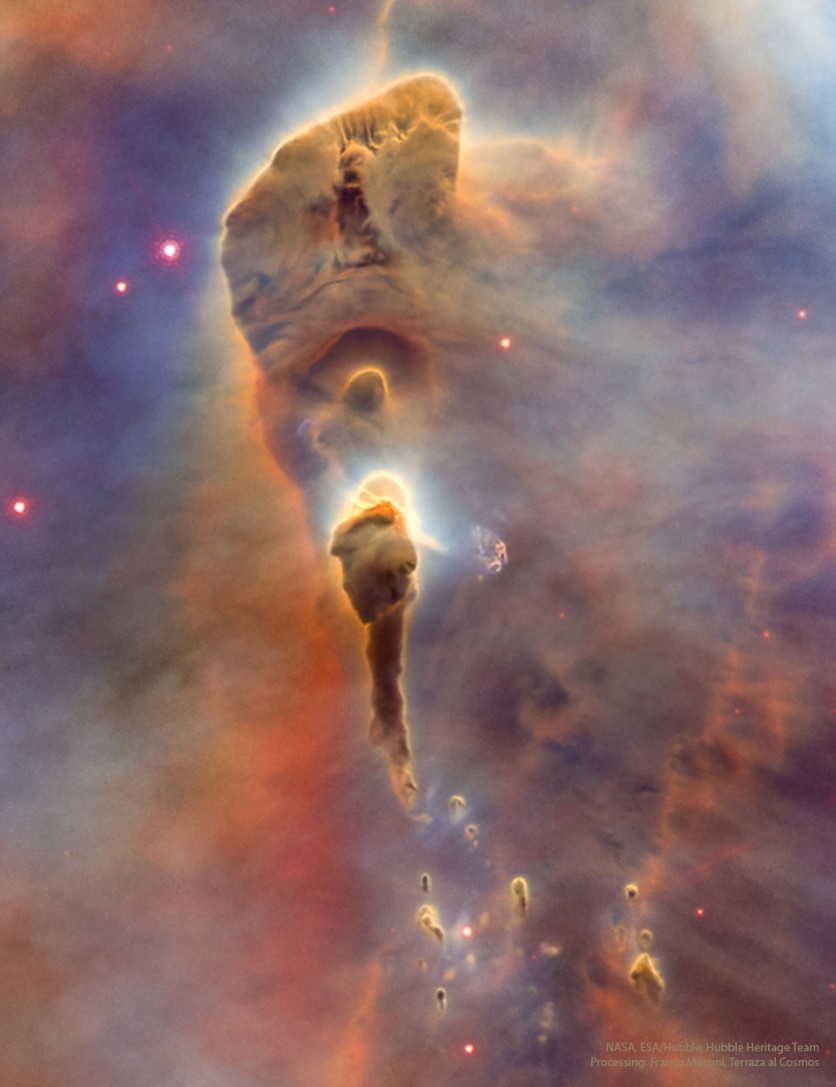In a captivating celestial showdown, stars clash with cosmic dust, and NASA's Picture of the Day captures the ongoing battle in the mesmerizing Carina Nebula.
The clash unfolds within the mystical confines of the Carina Nebula, where newborn stars, fueled by their energetic light and powerful winds, engage in a relentless campaign against the dusty stellar nurseries that birthed them.

Mystic Mountain Region
The image, a masterpiece captured by the Hubble Space Telescope and processed by Franco Meconi, showcases the drama within the Carina Nebula's Mystic Mountain region.
Here, towering pillars, dominated by opaque brown dust yet predominantly composed of transparent hydrogen gas, bear witness to the celestial conflict. Like cosmic champions, the stars radiate intense light and unleash winds that gradually erode and disperse the once-cozy stellar cradles.
Despite their appearance resembling torches ablaze with fiery ends, these dust pillars are not alight with flames. Instead, they bask in the luminance bestowed upon them by neighboring stars.
According to NASA, the interplay of light and shadow in this cosmic arena creates a breathtaking visual spectacle where the stars' brilliance contends with the veils of dust that shroud them.
Situated approximately 7,500 light-years away, this featured image hones in on a specific region known as HH1066, nestled within the expansive Carina Nebula.
HH1066 encapsulates the dynamism of stellar birth and the gradual transformation of these dusty pillars under the relentless influence of their radiant offspring.
Who Is Gaining the Upper Hand?
In this cosmic ballet, the stars, in their prime, are gradually gaining the upper hand. According to NASA, their energetic onslaught promises to overcome the resilient dusty structures, and the celestial torches, once vivid symbols of stellar infancy, are destined to succumb to the relentless forces of light and wind.
The Carina Nebula holds a storied legacy in astronomical annals. With monikers like the Grand Nebula and the Eta Carinae Nebula, bestowed in honor of the bright star at its core, this celestial marvel has fascinated astronomers since its discovery by Nicolas Louis de Lacaille in 1752.
Today, the Carina Nebula continues to be a captivating subject for study, offering insights into the relentless dance between stars and the cosmic cradles that shape their existence.
The Carina Nebula is a rich area for scientific study, providing astronomers with insights into the processes of star formation, the life cycles of massive stars, and the dynamics of interstellar matter.
It is often observed using various telescopes, including those sensitive to infrared and X-ray wavelengths, allowing astronomers to study the nebula across different parts of the electromagnetic spectrum.
The Hubble Space Telescope has captured stunning images of the Carina Nebula, revealing intricate details of its structure and its diverse population of stars. The nebula's beauty and scientific significance make it a captivating subject for astronomers and a popular target for astrophotographers.
Related Article : NASA's Picture of the Day: Jupiter Looking Sharp in These Breathtaking New Rooftop Telescope Images

ⓒ 2025 TECHTIMES.com All rights reserved. Do not reproduce without permission.




